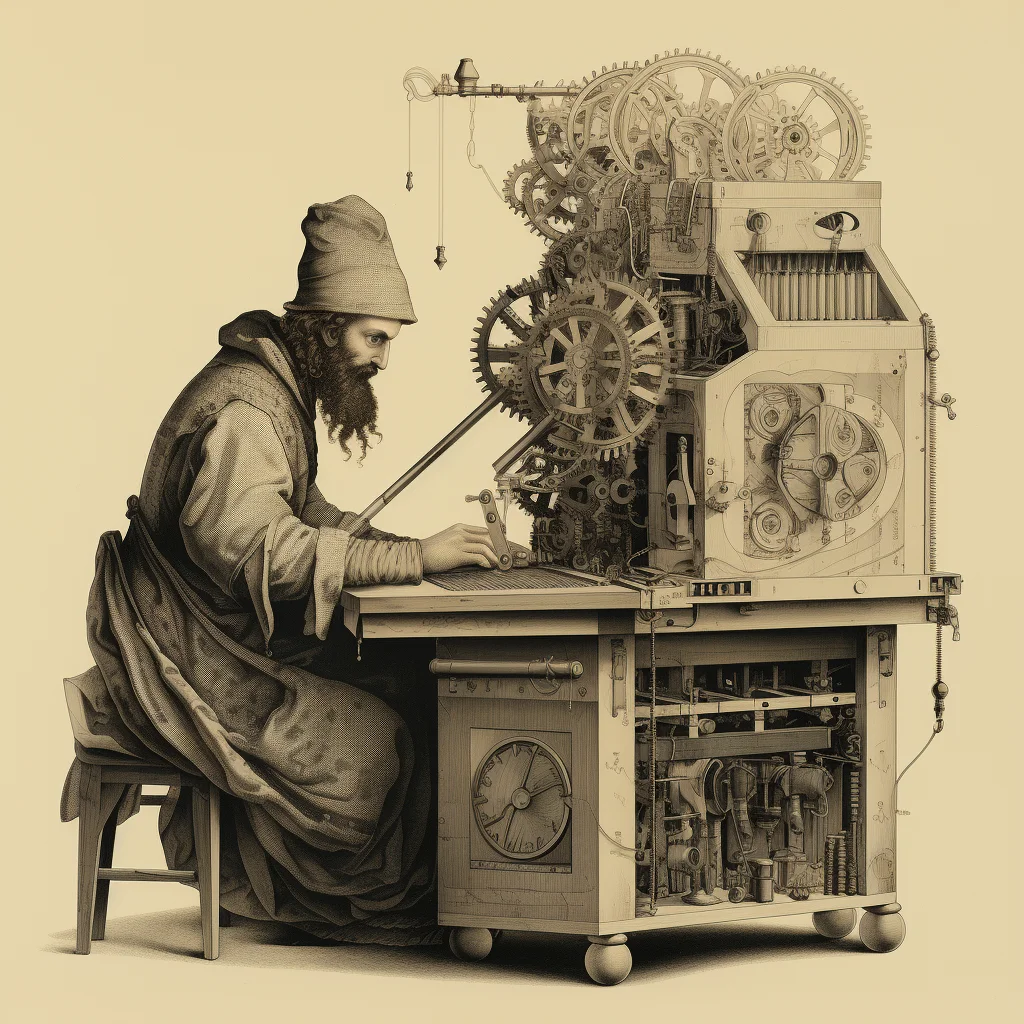An 18th-century chess-playing automaton that is an early precursor to modern AI and human-machine collaboration. Explore its creation, impact on society, and how its legacy shapes artificial intelligence today.
Many individuals in AI might have come across the captivating tale of the Mechanical Turk. Constructed in 1770, this chess-playing machine was so proficient that its opponents were fooled entirely, leading them to believe they were up against an intelligent automaton. The truth behind this marvelous creation teaches us a valuable lesson about the early development of artificial intelligence and human interaction with machines.
➜ The Mechanical Turk’s Creation and the Deception
Wolfgang von Kempelen, a Hungarian inventor, devised the Mechanical Turk. This “automaton,” resembling a life-size human figure, could play chess proficiently and even defeated remarkable players of the time. However, beneath its ingenious design, the Turk concealed a human chess master hidden inside the machine. By controlling the mechanism, the human participant could successfully manipulate the Turk’s moves, creating an impressive illusion of machine intelligence.
➜ Impact on 18th-century Society
The Mechanical Turk astonished onlookers and led them to believe that an intelligent machine could play chess. Its novelty captivated society, and it toured Europe, defeating impressive opponents such as Napoleon Bonaparte and Benjamin Franklin. The Turk’s deceptive prowess spurred debates and philosophical reflections on the limits of human and mechanical capabilities.
➜ The Connection to Modern AI
The Mechanical Turk’s legacy continues to tower over AI and human-machine collaboration, even more than two centuries later. The deception of combining human expertise and mechanical prowess to create an illusion of an intelligent machine foreshadowed today’s collaboration between humans and AI. With their customized AI-based writing tools, provide an example of how humans and AI collaborate to create effective solutions.
“The Mechanical Turk’s legacy continues to tower over the worlds of AI and human-machine collaboration, even more than two centuries later.”
➜ Amazon’s Nod to History with Mechanical Turk
Amazon named their popular crowdsourcing platform, Amazon Mechanical Turk, a tribute to the 18th-century marvel. The platform allows users to enlist a large, distributed workforce comprising humans performing tasks that AI technology currently struggles with. This service embraces the spirit of the Mechanical Turk, bridging the gap between human skill and AI capabilities.
The enthralling story of the Mechanical Turk provides crucial insights into the origins of AI and offers an early glimpse into human-machine collaboration. This 18th-century chess-playing automaton exemplifies an early artificial intelligence endeavor that sought to mystify society with an illusion of intelligent machinery. The Mechanical Turk remains a symbolic representation of the inextricable bond between humans and machines that has persisted over the centuries, paving the path for collaborative efforts like those found at NeuralWit today.


